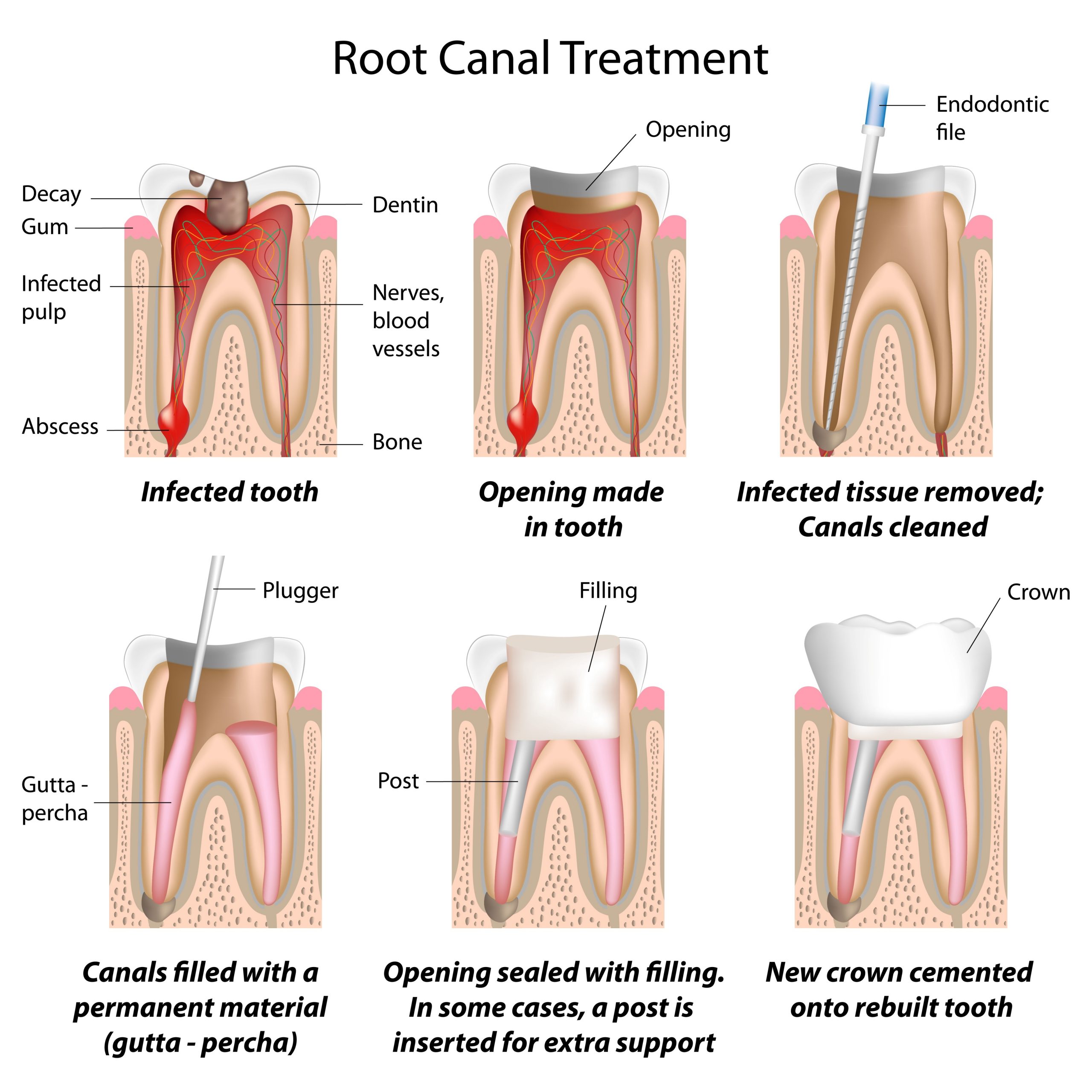Root Canal Re-Treatment
Root Canal re-treatment is done if a previous root canal treatment has failed. Root canal re-treatment includes taking off the previous crown and cleaning the canals. It will then be refilled and a crown will be placed back on the treated tooth. A root canal re-treatment is basically the same as the original treatment other than the removal of the structure and its success rate is about 75%. Here at Smile Hub Dental Clinic in Bayside Medical Centre, we always try to keep teeth in cases where it is possible which is why we think root canal re-treatment is a good option for some patients instead of an extraction. Root canal re-treatment is a simple procedure which may only take 2 or 3 visits. If a tooth has enough bone and gums to support it and a solid surface there is a good chance that it can be saved. Other options if the tooth is extracted such as dental implants or bridges can be more expensive and harder to maintain.
A root canal may fail and need to be re-treated due to the following occurrences:
- A crown has cracked and the filling material is leaking
- Awkwardly shaped or thin canals have not been treated properly in the first treatment
- A crown placement has been delayed after the root canal treatment
- The tooth has new decay in it
- A fracture has occurred in the root filled tooth
- Saliva and bacteria had gotten into the restorative structure
- Unnoticed complex canal structures
Before the root canal re-treatment starts, the patient will be given anaesthetic to numb the area. Here at Smile Hub Dental Clinic, we offer adult sedation for nervous patients so this can be an option for this treatment too. The tooth being treated will be surrounded with a rubber dam to keep the tooth dry and protected from saliva and bacteria. If the area is very inflamed or the treatment is difficult, there might be multiple appointments needed. If there is a post or crown placed it will be removed. The filling material blocking the canals will be taken out and the canals will be cleaned and reshaped with very small instruments. The dentist will take an x -ray to make sure that the roots are completely clean. If the treatment is difficult a medicated filling material may be placed and the patient will come back for a second visit. If the dentist is sure that the root canals are clean, they will fill the canals with a rubber material to seal the canals and prevent any bacteria getting in which may cause infection. A temporary filling or crown will be placed until the permanent crown is completed.
If you have any queries about root canal re treatment, please contact Smile Hub Dental Clinic at 01 5253888 or Book Online.

























